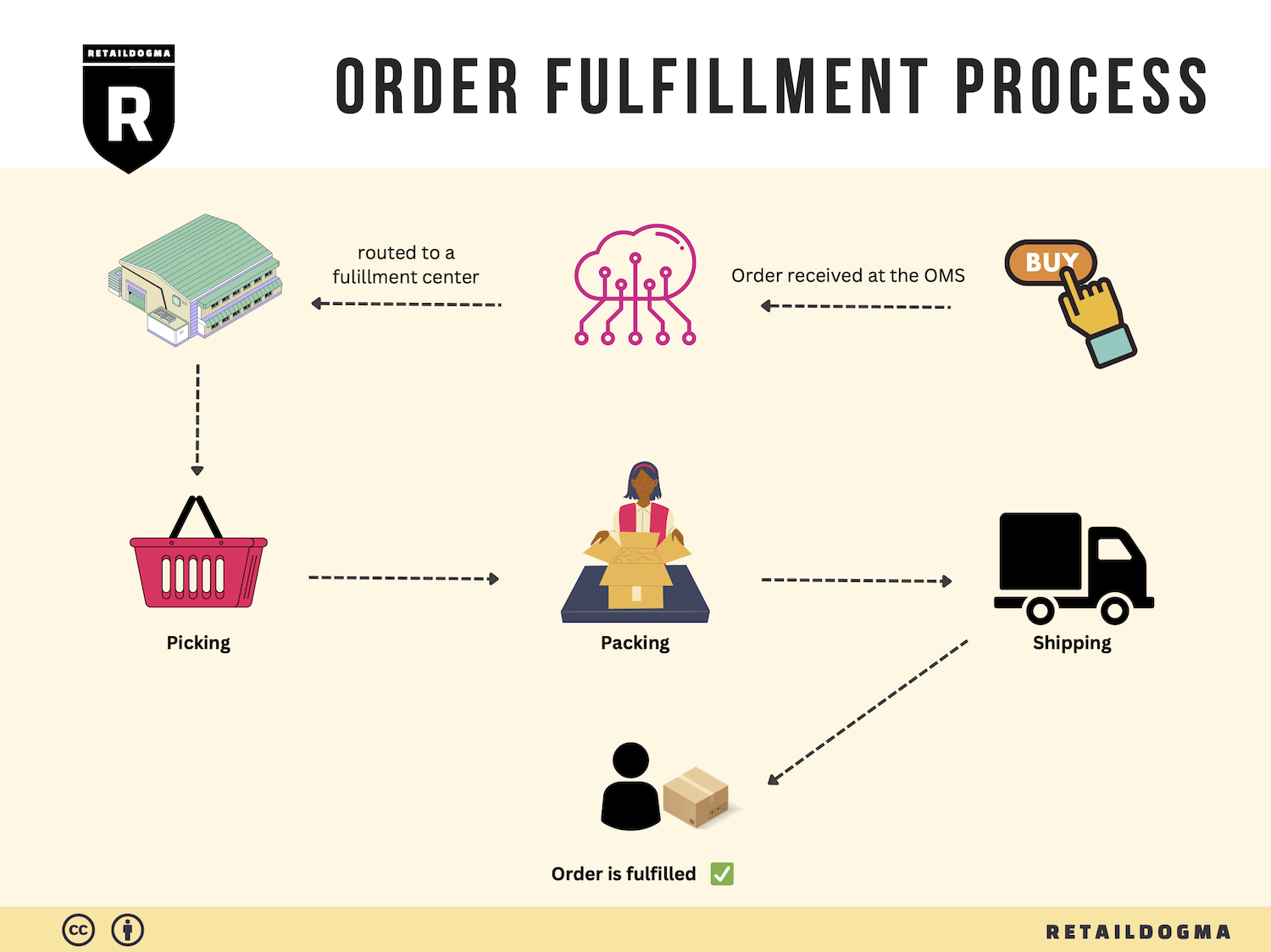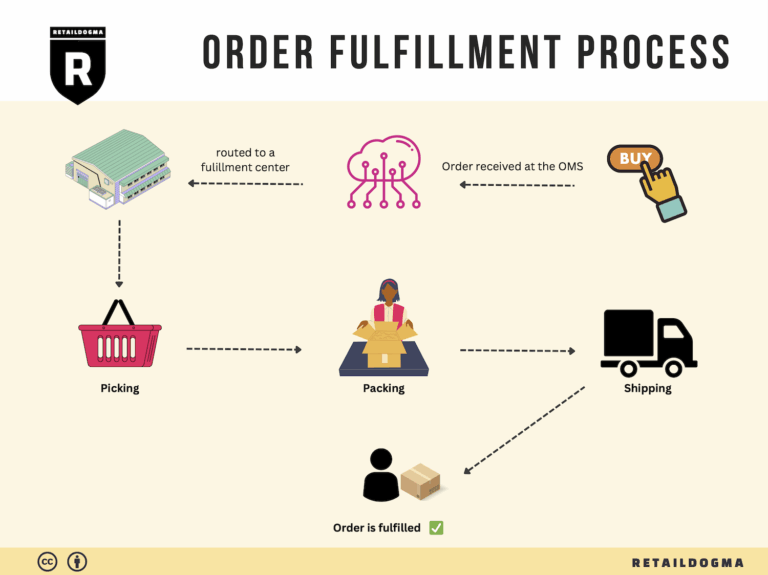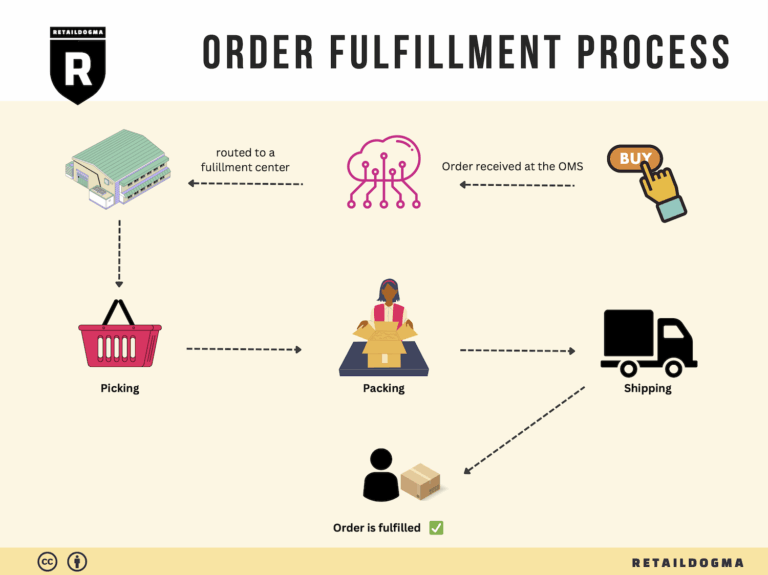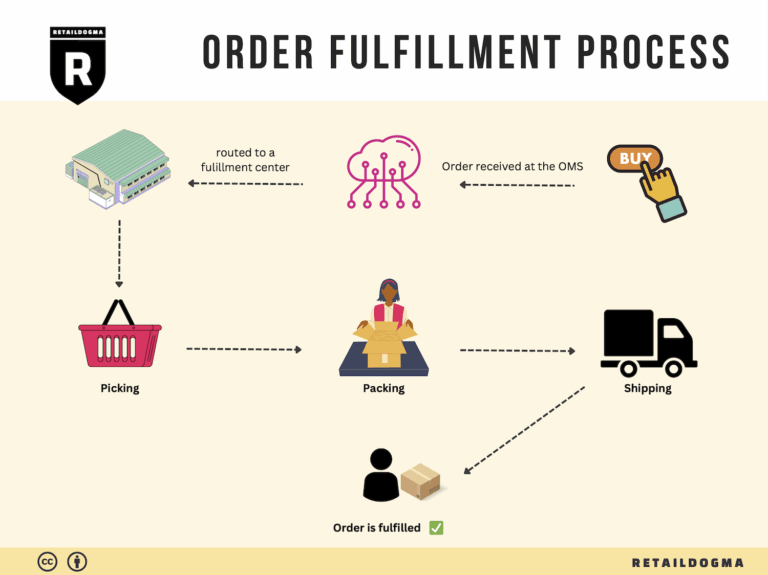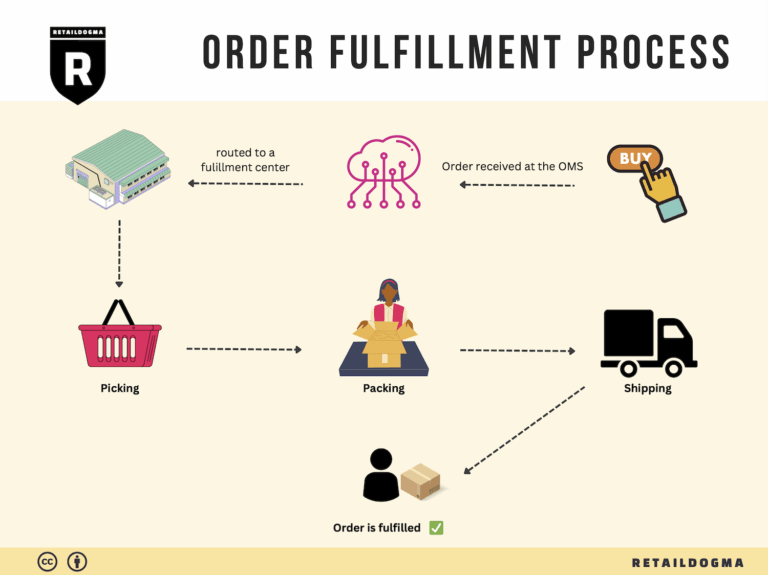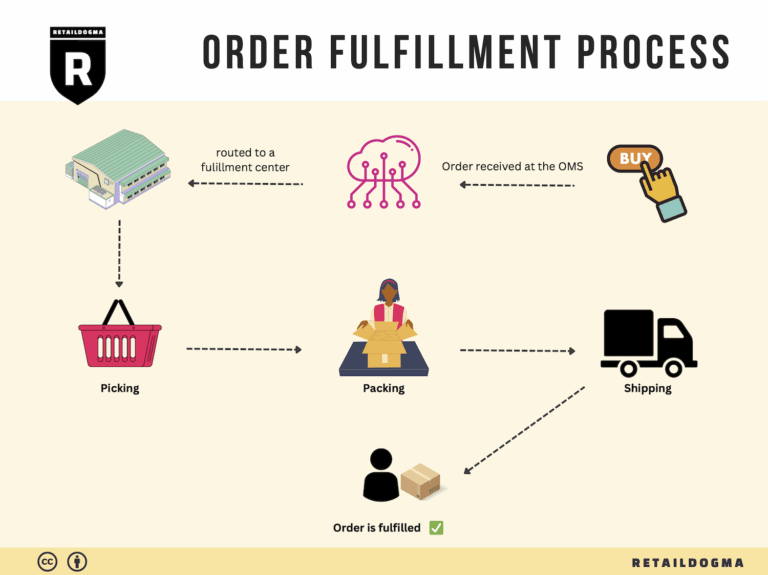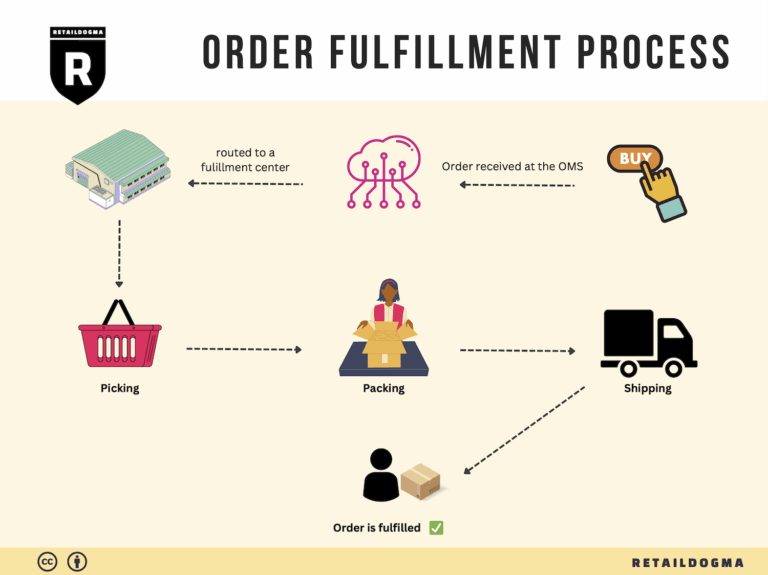What Is A Fulfillment Center? A Complete Guide (2025)
What is E-commerce Fulfillment? An Introduction for Growing Businesses
Understanding E-commerce Fulfillment
As your online business begins to grow, you may find yourself grappling with the complexities of packing and shipping orders efficiently. It’s a common pain point: the excitement of increased sales can quickly turn into overwhelm as you juggle order management, inventory tracking, and logistics. At its core, e-commerce fulfillment is the process of getting a product to a customer—ensuring that the right item is delivered to the right place, at the right time. However, the intricacies of this process can be daunting, especially for growing businesses.
This guide aims to demystify e-commerce fulfillment by breaking it down into manageable components. We will explore various fulfillment models, such as Third-Party Logistics (3PL) and Fulfillment by Amazon (FBA), and discuss their unique benefits and challenges. Understanding these models will help you identify the right fit for your business needs.
Next, we will delve into the core services that fulfillment partners typically offer, including inventory management, order processing, shipping, and returns handling. Knowing what to expect from a fulfillment partner can save you time and resources, allowing you to focus on what you do best—growing your business.
Choosing the right fulfillment partner is crucial for scaling your operations. This guide will provide practical tips on how to evaluate potential partners based on their capabilities, technology, and customer service. We’ll also cover important factors to consider when it comes to pricing, ensuring that you can find a solution that aligns with your budget while meeting your service expectations.
Ultimately, our goal is to empower you to make informed decisions about your logistics strategy. By understanding the nuances of e-commerce fulfillment and how to navigate them effectively, you can enhance customer satisfaction, streamline operations, and drive growth. Whether you’re a small startup or an established player in the e-commerce space, this guide is designed to equip you with the knowledge needed to optimize your fulfillment processes and keep your customers happy.
What You’ll Learn In This Guide
- What is E-commerce Fulfillment? An Introduction for Growing Businesses
- The Order Fulfillment Process: From ‘Buy’ Button to Customer’s Door
- Comparing Fulfillment Models: In-House vs. 3PL vs. Dropshipping
- A Deep Dive into Amazon FBA: Pros, Cons, and Who It’s For
- Core Services Offered by Fulfillment Centers
- How to Choose a Fulfillment Partner: A 6-Point Checklist
- Understanding Fulfillment Pricing: A Breakdown of Common Fees
- Frequently Asked Questions (FAQs) about Fulfillment
- Conclusion: Is Outsourcing Fulfillment the Right Move for Your Business?
- Important Disclaimer
The Order Fulfillment Process: From ‘Buy’ Button to Customer’s Door
1. Receiving Inventory
The order fulfillment process begins with receiving inventory, a critical first step that sets the foundation for efficient operations. When products arrive at your warehouse or fulfillment center, they must be checked against purchase orders to ensure accuracy. This involves verifying quantities, quality, and the condition of goods received.
Importance: Proper receiving procedures help prevent discrepancies that could lead to stockouts or excess inventory, which can severely impact your ability to fulfill orders. Accurate receiving also establishes a reliable inventory baseline, ensuring that your stock levels are correctly reflected in your inventory management system.
Key Term: SKU (Stock Keeping Unit) – This unique identifier helps track inventory at the item level, facilitating easier management and reporting.
2. Warehouse Storage
Once inventory is received and verified, the next step is warehouse storage. This involves organizing products in a systematic manner that maximizes space while ensuring easy access for order fulfillment. Efficient storage solutions may include shelving, pallets, or bins, and the use of warehouse management systems (WMS) can help optimize storage layouts.
Importance: Effective warehouse storage is essential for reducing picking times and improving overall efficiency. The right layout can minimize the distance workers travel to retrieve items, leading to faster order processing and enhanced customer satisfaction.
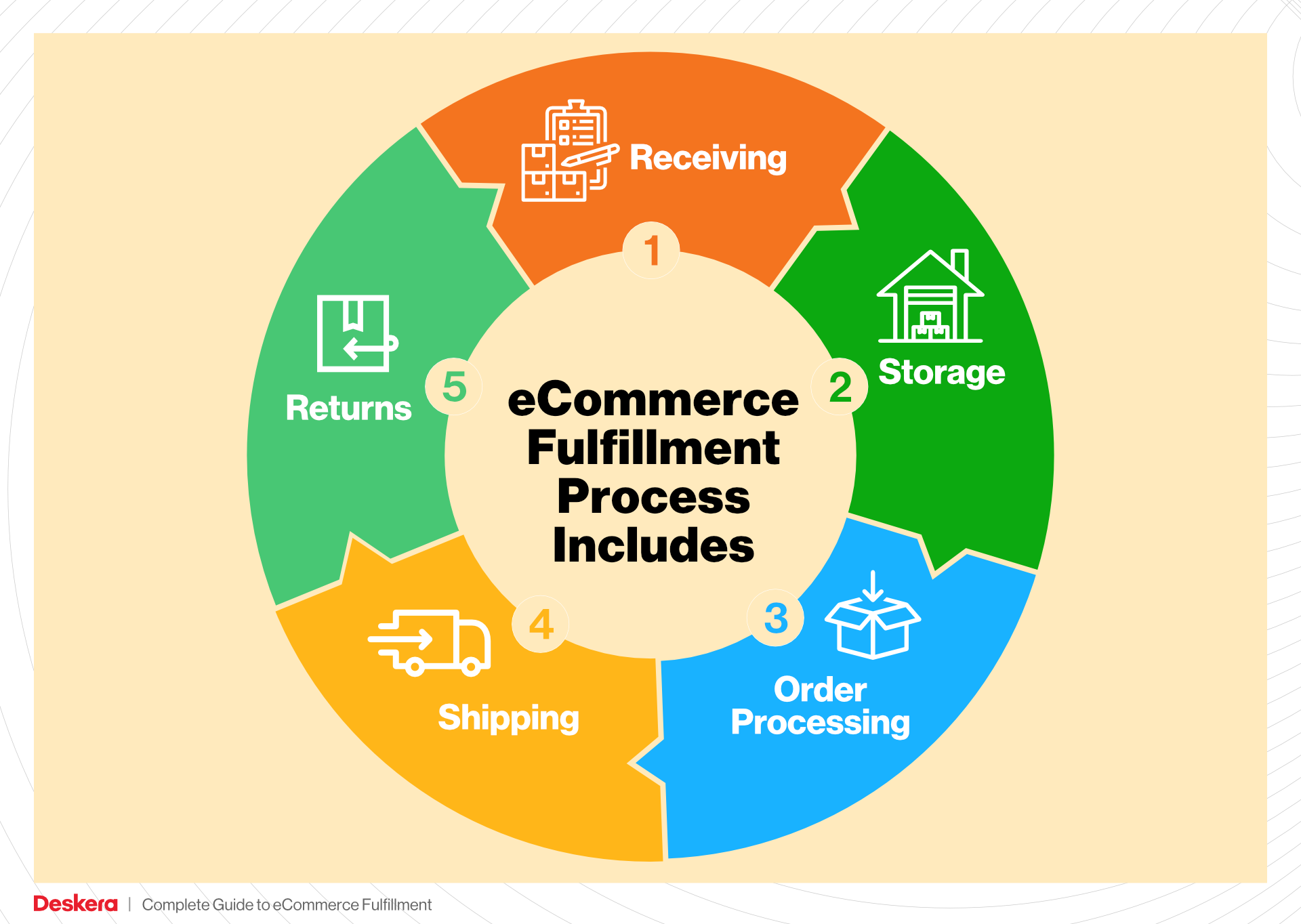
Key Term: ABC Analysis – This inventory categorization technique helps prioritize stock based on its importance and turnover rate, allowing businesses to allocate space and resources more effectively.
3. Order Picking
Order picking is the process of selecting products from inventory to fulfill customer orders. This step can involve various methods, such as single order picking (picking items for one order at a time) or batch picking (picking items for multiple orders simultaneously). The choice of method depends on the volume of orders and the type of products being picked.
Importance: Efficient order picking is crucial for meeting customer expectations regarding delivery speed and accuracy. Errors in this stage can lead to incorrect shipments, resulting in returns and dissatisfied customers. By optimizing picking processes, businesses can significantly enhance fulfillment speed and accuracy.
Key Term: Pick Lists – These are documents or digital lists generated by your inventory management system that detail the items to be picked for each order, streamlining the picking process and reducing errors.
4. Order Packing
After items are picked, they move to the packing stage, where products are prepared for shipment. This involves placing items in appropriate packaging, ensuring they are secure and protected during transit. Additionally, packing may involve including invoices, return labels, and promotional materials to enhance the customer experience.
Importance: Proper packing is essential not only for safeguarding products but also for ensuring compliance with shipping regulations. An organized packing process can minimize delays and reduce the likelihood of damage during transit, leading to fewer returns and higher customer satisfaction.
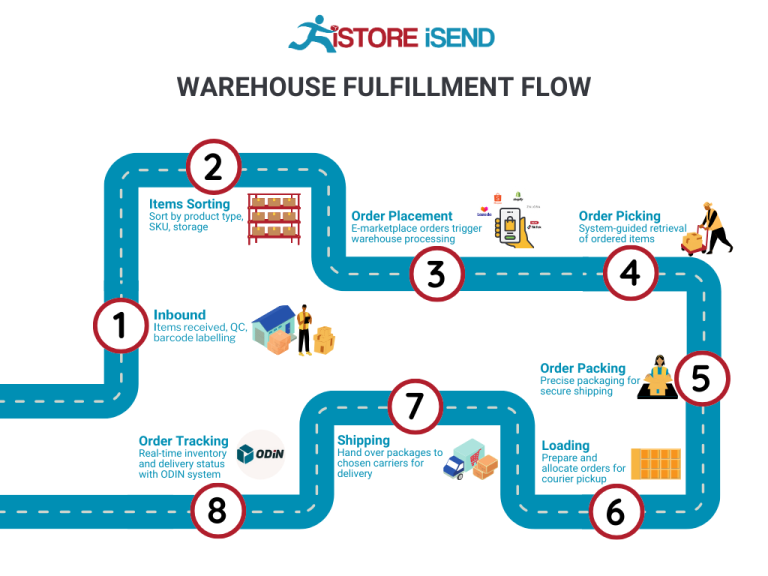
Key Term: Dimensional Weight Pricing – Many carriers use this pricing model, which factors in package dimensions along with weight, making it critical to pack items efficiently to control shipping costs.
5. Shipping & Delivery
The final step in the order fulfillment process is shipping and delivery. This involves selecting a shipping carrier, printing shipping labels, and dispatching orders for delivery. It’s important to provide customers with tracking information to keep them informed about their order status.
Importance: Effective shipping and delivery are vital for maintaining customer satisfaction. Fast and reliable delivery options can differentiate your business from competitors and foster repeat purchases. Additionally, a well-managed shipping process can help optimize costs and improve profit margins.
Key Term: Last-Mile Delivery – This term refers to the final step in the shipping process, where the product is delivered from a distribution center to the customer’s doorstep. Efficient last-mile delivery is critical for ensuring timely and satisfactory order fulfillment.
By following these five structured steps in the order fulfillment process, e-commerce businesses can enhance their operational efficiency, boost customer satisfaction, and ultimately drive sales growth. Each step plays a pivotal role in ensuring that the journey from the ‘buy’ button to the customer’s door is seamless and effective.
Comparing Fulfillment Models: In-House vs. 3PL vs. Dropshipping
Fulfillment Model Comparison
| Model | Who Handles Inventory | Best For (Business Stage) | Key Advantage | Key Disadvantage |
|---|---|---|---|---|
| In-House Fulfillment | Business itself | Established businesses | Full control over operations | High operational costs |
| Third-Party Logistics (3PL) | 3PL provider | Scaling businesses | Scalability and flexibility | Less control over inventory |
| Dropshipping | Supplier | Startups and small brands | Low overhead costs | Lower profit margins and reliability |
In-House Fulfillment
In-house fulfillment involves a business managing its own inventory, warehousing, and shipping processes. This model is best suited for established businesses that have a solid customer base and can predict demand with reasonable accuracy. The key advantage of in-house fulfillment is the level of control it offers over every aspect of operations, from inventory management to order processing and shipping. Businesses can ensure quality control, customize packaging, and enhance the customer experience through personalized touches.
However, this model comes with significant disadvantages. The operational costs can be high, requiring investment in warehouse space, labor, technology, and logistics. As a business scales, the complexity of managing these aspects can become overwhelming, potentially detracting from core business activities like product development and marketing. Additionally, in-house fulfillment may struggle to adapt quickly to fluctuating market demands, leading to challenges in inventory management, especially during peak seasons.
Third-Party Logistics (3PL)
Third-party logistics (3PL) involves outsourcing logistics functions to specialized providers. This model is particularly beneficial for businesses that are in a growth phase and need to scale their operations without the burden of managing warehousing and shipping in-house. A significant advantage of using a 3PL is the scalability and flexibility it provides. Businesses can quickly adjust their logistics capabilities based on demand, seasonal fluctuations, or market expansion without significant upfront investments.
However, the trade-off is a loss of direct control over inventory and fulfillment processes. Businesses must rely on their 3PL partners to meet service levels, manage inventory accuracy, and provide timely deliveries. This dependence can lead to challenges if the 3PL fails to meet expectations or if there are communication breakdowns. Additionally, businesses might face hidden costs associated with 3PL services, such as fees for storage, handling, or unexpected surcharges, which can affect overall profitability.
Dropshipping
Dropshipping is a fulfillment model where the retailer does not keep products in stock but instead transfers customer orders directly to a supplier, who then ships the products directly to the customer. This model is particularly advantageous for startups and small brands, as it requires minimal upfront investment and allows businesses to offer a wide range of products without the risk of holding inventory. The key advantage of dropshipping is its low overhead costs, enabling entrepreneurs to focus on marketing and customer acquisition rather than logistics.
However, dropshipping also has its downsides. Profit margins tend to be lower compared to other fulfillment models because the retailer must share profits with the supplier. Additionally, businesses have less control over product quality and shipping times, which can lead to customer dissatisfaction if suppliers do not meet expectations. Furthermore, the competition in dropshipping is fierce, making it challenging for new entrants to differentiate themselves and build a loyal customer base. As a result, while dropshipping can be an effective entry point into e-commerce, it may not be sustainable long-term without strategic planning and market differentiation.
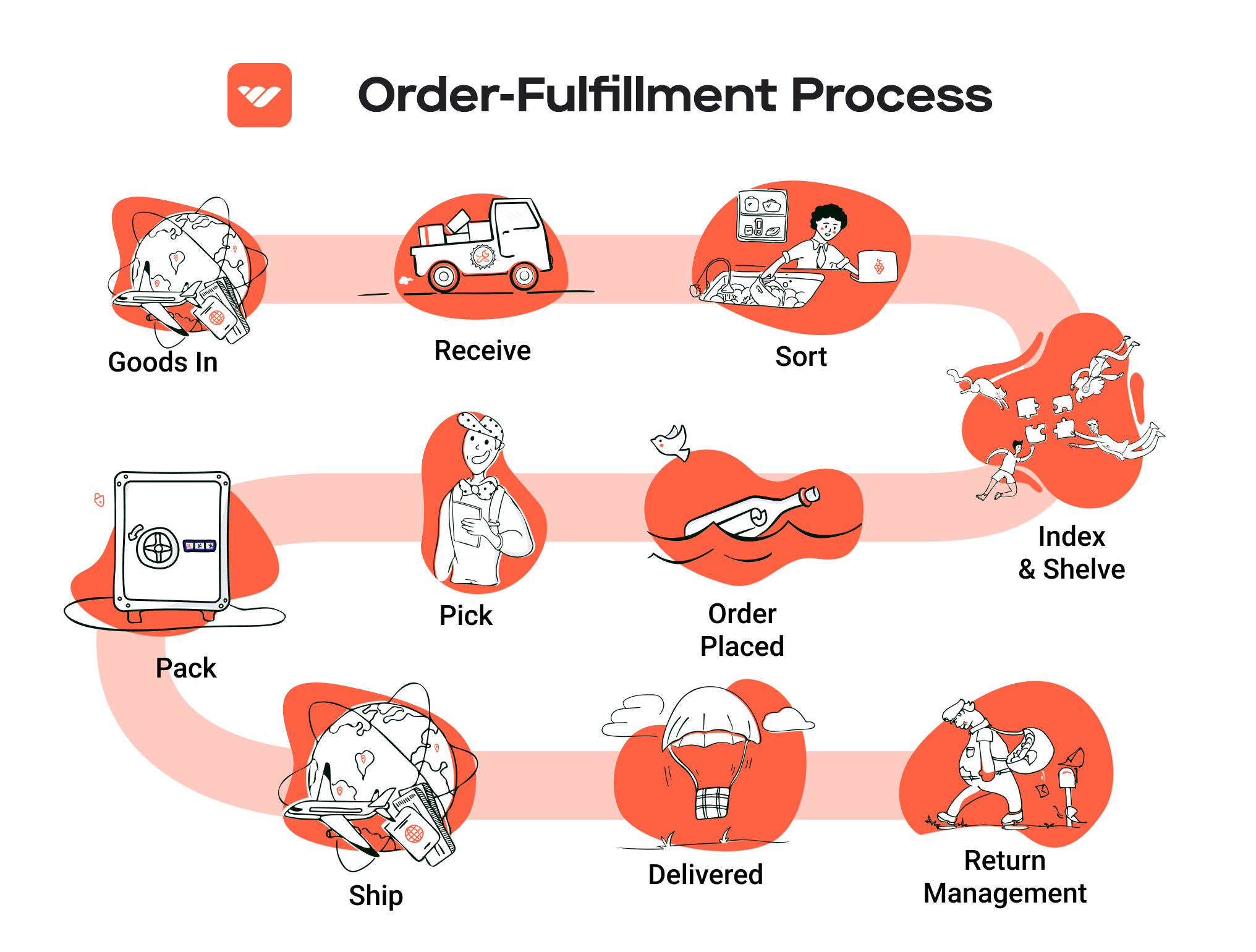
Conclusion
Choosing the right fulfillment model depends on various factors, including the stage of your business, the level of control you desire, operational costs, and scalability needs. In-house fulfillment offers control but can be costly and complex. Third-party logistics provides flexibility and scalability but at the expense of some control. Dropshipping is a low-risk entry point but may lead to lower profit margins and customer satisfaction challenges. Assessing these models against your business goals and operational capabilities will help you make an informed decision that aligns with your growth strategy.
A Deep Dive into Amazon FBA: Pros, Cons, and Who It’s For
Understanding Fulfillment by Amazon (FBA)
Fulfillment by Amazon (FBA) is a service provided by Amazon that allows e-commerce sellers to store their products in Amazon’s fulfillment centers. Amazon takes care of storage, packaging, and shipping of products directly to customers. This service is particularly appealing for businesses looking to leverage Amazon’s vast logistics network and customer base. When a customer orders a product, Amazon handles everything from picking and packing to shipping and customer service. Sellers simply create a product listing and send their inventory to Amazon.
How FBA Works
-
Inventory Management: Sellers send their products to Amazon’s warehouses, where they are stored until sold. Sellers must create a shipping plan in their Seller Central account, detailing which products will be sent and in what quantities.
-
Product Listing: After the products arrive at Amazon, they are listed on the Amazon marketplace. Sellers can either create new listings or use existing ones.
-
Order Fulfillment: When a customer places an order, Amazon picks the product from its inventory, packs it, and ships it directly to the customer. This process typically ensures fast delivery, often within one to two days for Prime members.
-
Customer Service: Amazon also handles customer service inquiries and returns for FBA products, allowing sellers to focus on other aspects of their business.
-
Fees: While FBA provides numerous benefits, it does come with associated costs, including storage fees and fulfillment fees based on the size and weight of products.
Pros of Fulfillment by Amazon
1. Prime Eligibility
One of the standout advantages of using FBA is the ability to qualify for Amazon Prime. Products fulfilled by Amazon are often eligible for Prime shipping, which significantly increases visibility and attractiveness to customers who prioritize quick delivery. This can lead to higher conversion rates and repeat purchases.
2. Customer Trust
Amazon has built a reputation for reliability, and by using FBA, sellers can leverage this trust. Customers are more likely to purchase from sellers whose products are fulfilled by Amazon due to the assurance of prompt shipping and excellent customer service. This trust can enhance brand credibility and encourage new customer acquisition.
3. Multi-Channel Fulfillment
FBA isn’t limited to just Amazon sales. Sellers can utilize Amazon’s fulfillment services for orders placed on their own websites or other marketplaces. This flexibility allows businesses to streamline their logistics processes across multiple channels, improving overall efficiency.
4. Scalable Operations
FBA provides a scalable solution for businesses. As sales increase, sellers can easily send more inventory to Amazon without needing to invest in their own warehousing and logistics infrastructure. This scalability is particularly beneficial for businesses experiencing rapid growth.
5. Simplified Logistics
With FBA, sellers do not have to manage the complexities of packing, shipping, and handling returns. This allows them to focus on core business activities like marketing and product development.
Cons of Fulfillment by Amazon
1. High Fees
One of the most significant drawbacks of FBA is the cost. Sellers must pay fulfillment fees, which cover picking, packing, and shipping, along with storage fees for inventory stored in Amazon’s warehouses. For businesses with low margins, these fees can eat into profits.
2. Strict Inventory Rules
Amazon has specific guidelines for inventory management, including restrictions on the types of products that can be sold and limits on how long inventory can be stored. Sellers must be diligent about managing their stock levels to avoid long-term storage fees and potential removal of products from Amazon’s warehouses.
3. Commingling Risks
FBA products may be commingled, meaning Amazon may mix inventory from different sellers. While this can lead to faster shipping times, it also poses risks for sellers. If a customer receives a defective or damaged item that was fulfilled from another seller’s inventory, it could lead to negative reviews and impact the seller’s reputation.
4. Loss of Control
By using FBA, sellers relinquish a degree of control over the fulfillment process. This can be concerning for businesses that prioritize brand experience and customer service. Any issues with Amazon’s handling of products can reflect poorly on the seller.
5. Dependency on Amazon
Relying on FBA means that sellers are subject to Amazon’s policies and changes, which can impact their business operations. This dependency can be risky, especially if Amazon alters fees, policies, or the overall marketplace environment.
Who is FBA Best For?
Fulfillment by Amazon is particularly well-suited for:
-
Small to Medium-Sized Businesses: Companies that lack the infrastructure for in-house fulfillment can benefit from FBA’s logistics capabilities without the heavy investment in warehousing and shipping.
-
E-commerce Brands Seeking Growth: Businesses aiming to scale quickly can leverage Amazon’s vast customer base and fulfillment capabilities to increase sales.
-
Sellers with High Volume: Brands with significant inventory turnover can take advantage of FBA to streamline operations and reduce the burden of logistics.
-
Multi-Channel Sellers: Businesses that sell on multiple platforms can utilize FBA to simplify their fulfillment process across different sales channels.
-
New Entrants to E-commerce: For those new to online selling, FBA provides a straightforward way to get started without the need for extensive logistics knowledge.
In conclusion, while FBA offers numerous benefits such as Prime eligibility, customer trust, and simplified logistics, it’s essential for sellers to weigh these against the potential downsides, including high fees and loss of control. By understanding these dynamics, e-commerce business owners can make informed decisions about whether FBA aligns with their growth strategy.
Core Services Offered by Fulfillment Centers
Inventory Management & Warehousing
Inventory management and warehousing are foundational services provided by fulfillment centers that allow e-commerce businesses to maintain an organized and efficient supply chain. This service encompasses the storage, tracking, and management of inventory levels across various sales channels.
What It Is:
Fulfillment centers utilize advanced inventory management systems (IMS) to monitor stock levels, manage reorders, and track product movement. These systems provide real-time data, enabling businesses to understand their inventory status at any given moment.
Benefits:
The primary benefit of effective inventory management is enhanced visibility and control over stock levels, which helps prevent overstocking and stockouts. By having a clear understanding of inventory, businesses can optimize their purchasing decisions, reduce holding costs, and improve cash flow. Moreover, accurate inventory tracking ensures that customers receive their orders on time, thereby enhancing overall customer satisfaction. This service also allows for better demand forecasting, enabling businesses to adjust their inventory based on seasonal trends or market shifts.
Pick and Pack Services
Pick and pack services are crucial components of the order fulfillment process that directly influence the speed and accuracy of deliveries to customers.
What It Is:
In this process, fulfillment center staff pick items from the warehouse shelves based on incoming orders and pack them appropriately for shipment. This involves selecting the correct products, verifying their accuracy, and preparing them for delivery using the right packaging materials.
Benefits:
The efficiency of pick and pack services can significantly impact an e-commerce business’s operational performance. By streamlining these processes, businesses can reduce the time taken to fulfill orders, which is critical in today’s fast-paced retail environment. Quick and accurate order fulfillment not only enhances customer satisfaction but also encourages repeat purchases. Additionally, fulfillment centers often utilize technology such as barcode scanning and automated systems to minimize errors, ensuring that the right products are sent to the right customers. This accuracy helps reduce returns and increases trust in the brand.
Kitting and Assembly
Kitting and assembly services involve the preparation of products in a way that makes them ready for sale or distribution, often combining multiple items into a single package.
What It Is:
This service is particularly useful for businesses that offer product bundles, promotional items, or complex products requiring assembly before shipping. Fulfillment centers will gather the necessary components and assemble them into a finished product or kit.
Benefits:
Kitting and assembly can greatly enhance the product offering of an e-commerce business by allowing for customized bundles that appeal to consumers. This not only simplifies the purchasing process for customers but also often results in increased average order values. For instance, a customer might be more inclined to purchase a bundled kit rather than individual items. Additionally, this service can streamline logistics, as businesses can ship fewer packages while meeting customer needs, thereby reducing shipping costs and improving operational efficiency. Moreover, well-assembled kits can enhance the unboxing experience, contributing to positive brand perception.
Returns Management (Reverse Logistics)
Returns management, or reverse logistics, is a critical service that addresses the handling of returned items, a vital aspect of the e-commerce customer experience.
What It Is:
Fulfillment centers manage the entire returns process, from providing return labels to receiving, inspecting, and restocking returned items. This service includes assessing the condition of returned products and determining whether they can be resold, repaired, or need to be disposed of.
Benefits:
An efficient returns management system is essential for maintaining customer satisfaction and loyalty. Customers today expect hassle-free return processes, and a fulfillment center that manages returns effectively can provide that. By streamlining returns, businesses can minimize the costs associated with reverse logistics and improve their overall operational efficiency. Additionally, the ability to quickly process returns means that businesses can restock sellable items faster, making them available for resale without unnecessary delays. This responsiveness can enhance customer trust and encourage repeat business, as satisfied customers are more likely to return for future purchases.
In summary, partnering with a fulfillment center that offers these core services can significantly enhance an e-commerce business’s operational efficiency, customer satisfaction, and ultimately, its bottom line. By leveraging expert inventory management, efficient pick and pack processes, tailored kitting solutions, and robust returns management, businesses can scale effectively in a competitive marketplace.
How to Choose a Fulfillment Partner: A 6-Point Checklist
Location & Warehouse Network
The geographical location of your fulfillment partner’s warehouses can significantly impact your shipping times and costs. Proximity to your customer base allows for faster delivery, which is crucial in today’s fast-paced e-commerce environment.
Questions to Ask:
– Where are your warehouses located, and how many do you operate?
– What is your average shipping time to major markets?
– Do you have a strategy for expanding your warehouse network in the future?
Understanding the partner’s distribution network will help you gauge how well they can meet your shipping needs and customer expectations.
Technology & Integrations
In an omnichannel fulfillment strategy, technology plays a pivotal role in managing inventory, processing orders, and maintaining real-time visibility across all sales channels. A partner with robust technology can streamline your operations and enhance customer satisfaction.
Questions to Ask:
– What order management system (OMS) do you use, and how does it integrate with various e-commerce platforms?
– Can you provide real-time inventory tracking and reporting?
– How do you handle data security and compliance with regulations?
Assessing their technological capabilities will ensure that your fulfillment processes are efficient and aligned with your business goals.
Specializations (e.g., Cold Storage, Oversized Items)
Depending on your product range, your fulfillment partner may need specific capabilities. If you sell perishable goods, for example, a partner with cold storage facilities will be essential. Similarly, if you deal with oversized items, ensure that the partner can accommodate these unique needs.
Questions to Ask:
– What types of products do you specialize in handling?
– Do you have facilities for temperature-sensitive items?
– How do you manage oversized or bulky products during storage and shipping?
Identifying a partner with the right specialization will help you avoid costly errors and ensure your products are stored and shipped appropriately.
Scalability & Capacity
As your business grows, your fulfillment needs will change. A partner that can scale with you is essential for long-term success. This includes having the capacity to handle seasonal spikes in demand or rapid growth phases.
Questions to Ask:
– What is your current capacity, and how easily can you scale up during peak seasons?
– How do you manage fluctuations in order volume?
– Can you provide examples of how you’ve supported clients during periods of growth?
Understanding their scalability will help you choose a partner that can adapt as your business evolves, avoiding disruptions in service.
Pricing and Contracts
Cost is always a critical factor in choosing a fulfillment partner. However, it’s not just about the bottom line; you need to understand how pricing structures work and what is included in the service.
Questions to Ask:
– Can you provide a detailed breakdown of your pricing model?
– Are there additional fees for services such as returns, storage, or seasonal surges?
– What are the terms of your contract, and is there flexibility for renegotiation?
Clarifying these details upfront will help you avoid unexpected costs and ensure that you can budget effectively for fulfillment services.
Customer Support & Reviews
Finally, the level of customer support you receive from your fulfillment partner can significantly affect your operations. You want a partner who is responsive, knowledgeable, and dedicated to solving issues as they arise.
Questions to Ask:
– What is your customer support structure, and how can I reach you?
– Do you offer a dedicated account manager?
– Can you provide testimonials or case studies from current or past clients?
Evaluating customer support and gathering reviews will give you insight into their reliability and commitment to service, which are critical for maintaining a smooth operation.
In conclusion, choosing the right fulfillment partner is a multifaceted decision that can have a profound impact on your e-commerce success. By considering factors such as location, technology, specialization, scalability, pricing, and customer support, you can make an informed decision that aligns with your business goals. Take the time to conduct thorough research and ask the right questions to find a partner that will support your growth and enhance your customer experience.
Understanding Fulfillment Pricing: A Breakdown of Common Fees
Initial Setup Fees
When partnering with a fulfillment provider, the initial setup fees are often the first financial consideration. These fees cover the cost of integrating your systems with the provider’s operations, which may include setting up software, configuring inventory management systems, and establishing communication channels.
The calculation of initial setup fees can vary widely based on the complexity of your needs. Factors influencing the cost include the size of your inventory, the number of sales channels you operate, and any specific software integrations required. It’s crucial to ask potential fulfillment partners for a detailed breakdown of these fees, as they can range from a few hundred to several thousand dollars, depending on your business’s specific requirements.
Receiving Fees
Receiving fees are charged when your inventory arrives at the fulfillment center. These fees cover the labor and processes involved in unloading, inspecting, and storing your products.
Typically, receiving fees are calculated on a per-pallet or per-batch basis. For instance, if you send a shipment containing 10 pallets, you might incur a fee per pallet received. The cost can also depend on the complexity of the receiving process—items that require special handling or inspection may incur additional charges. Understanding how your provider calculates these fees can help you anticipate costs and manage your inventory more effectively.
Storage Fees (per pallet/bin)
Storage fees are a recurring expense that businesses must consider when using a fulfillment center. These fees are charged for the space your inventory occupies within the warehouse.
Storage fees can be calculated in different ways, with the most common being on a per-pallet or per-bin basis. The rate can vary depending on the location of the warehouse and the volume of inventory you plan to store. Additionally, some providers may have tiered pricing, where the cost per pallet decreases as you store more inventory. It’s essential to evaluate storage fees relative to your inventory turnover rate; high storage costs can significantly impact your profit margins if your products do not move quickly.
Pick & Pack Fees (per item/order)
Pick and pack fees are incurred each time an order is processed for shipment. This fee covers the labor required to locate the items in the warehouse, pick them from the shelves, and package them for shipment.
Pick and pack fees can be structured in various ways, often charged per item or per order. For example, if you have an order with five items, you may pay a fee for each item picked. Some fulfillment centers also offer flat-rate pricing for orders, which can be beneficial for businesses with a consistent order volume. Understanding how these fees are structured will help you estimate fulfillment costs and optimize your order management strategy.
Shipping Fees
Shipping fees are among the most significant costs associated with fulfillment and can vary based on several factors, including the shipping method, package dimensions, weight, and destination.
Fulfillment providers typically offer multiple shipping options, from standard ground shipping to expedited delivery services. Costs may be calculated based on a combination of weight and distance, with additional surcharges for oversized packages or specific delivery requirements. Some fulfillment centers negotiate discounted shipping rates with carriers, which can be advantageous for your business. It’s critical to understand your shipping requirements and how they will affect your overall fulfillment costs.
Tips for Getting an Accurate Quote
-
Detail Your Needs: When requesting quotes from fulfillment providers, provide detailed information about your business, including inventory size, order volume, and specific fulfillment requirements.
-
Ask for a Breakdown: Request a detailed breakdown of all potential fees, including initial setup, receiving, storage, pick & pack, and shipping fees. This will help you compare different providers effectively.
-
Consider Future Growth: Think about your business’s growth trajectory. Some providers may offer volume discounts or incentives for scaling operations, which can significantly impact your overall costs.
-
Negotiate Terms: Don’t hesitate to negotiate terms and ask about potential discounts or bundled services that could lower your overall expenses.
-
Request Case Studies: Ask potential partners for case studies or references from similar businesses. This can give you insight into their pricing structure and service quality, helping you make a more informed decision.
By understanding these common fulfillment pricing models and following these tips, you can better navigate the complexities of fulfillment costs and select a provider that aligns with your business objectives.
Frequently Asked Questions (FAQs) about Fulfillment
1. What is omnichannel fulfillment?
Omnichannel fulfillment is a strategy that integrates various sales channels, allowing businesses to manage inventory and process orders from multiple platforms in a unified manner. This approach streamlines operations, enhances customer satisfaction, and ensures consistent inventory visibility across all channels, whether online or in-store.
2. How is omnichannel fulfillment different from multi-channel fulfillment?
While both strategies involve selling through multiple channels, omnichannel fulfillment unifies inventory and order management, allowing for a seamless customer experience. In contrast, multi-channel fulfillment typically treats each sales channel as a separate entity, which can lead to inefficiencies and challenges in inventory management.
3. What are the benefits of implementing an omnichannel fulfillment strategy?
The benefits include greater order efficiency, more accurate reporting, boosted sales and revenue, extended brand exposure, and increased consumer satisfaction. By consolidating operations, businesses can improve customer experience, leading to higher retention and repeat purchases.
4. How can omnichannel fulfillment enhance customer satisfaction?
Omnichannel fulfillment allows customers to interact with your brand across various platforms seamlessly. By offering services like Buy Online, Pick-Up In-Store (BOPIS) and Buy Online, Return In-Store (BORIS), you cater to modern consumers’ preferences, ultimately enhancing their shopping experience and satisfaction.
5. What is a fulfillment center, and how does it differ from a warehouse?
A fulfillment center is a specialized facility designed to handle order processing, packing, and shipping directly to customers. Unlike a traditional warehouse that primarily stores products, fulfillment centers focus on efficiently fulfilling customer orders and often incorporate advanced technology to streamline operations.
6. What is a 3PL, and how can it support my omnichannel fulfillment strategy?
A Third-Party Logistics (3PL) provider offers outsourced logistics services, including warehousing, inventory management, and order fulfillment. Partnering with a 3PL can enhance your omnichannel fulfillment strategy by providing expertise, scalability, and access to a network of warehouses, allowing you to meet customer demands more effectively.
7. How much do fulfillment services cost?
Fulfillment service costs can vary widely based on several factors, including order volume, storage needs, and specific services required. On average, businesses may expect to pay a combination of per-order fees, monthly storage fees, and additional charges for services like picking, packing, and shipping. It’s essential to evaluate your unique needs and compare providers to find the best fit.
8. What technology do I need to implement an omnichannel fulfillment strategy?
To successfully implement an omnichannel fulfillment strategy, you’ll need robust inventory management software that provides real-time visibility across all sales channels. Additionally, consider integrating tools for order management, customer relationship management (CRM), and analytics to enhance decision-making and operational efficiency.
9. How can I ensure accurate inventory management across multiple channels?
To maintain accurate inventory management, invest in an integrated system that synchronizes data across all channels in real time. Regularly audit your inventory, set reorder points, and employ demand forecasting to adjust stock levels as needed. This proactive approach can help prevent stockouts and overstock situations.
10. Is an omnichannel fulfillment strategy right for my business?
If your business aims to enhance customer experience, increase sales, and adapt to changing consumer behavior, adopting an omnichannel fulfillment strategy is likely beneficial. Assess your current fulfillment challenges and customer expectations to determine if this approach aligns with your growth objectives and operational capabilities.
Conclusion: Is Outsourcing Fulfillment the Right Move for Your Business?
Evaluating the Benefits of Outsourcing Fulfillment
Outsourcing your fulfillment operations can offer a myriad of advantages that are critical for scaling your e-commerce business. First and foremost, it saves time. By entrusting order processing, inventory management, and shipping logistics to a dedicated fulfillment partner, you free up valuable hours to focus on core business functions such as marketing, product development, and customer engagement. This shift can lead to improved efficiency and productivity across your organization.
Moreover, leveraging a third-party logistics (3PL) provider allows for significant scalability. As your business grows, so do your fulfillment needs. A proficient fulfillment service can easily adapt to spikes in demand, seasonal fluctuations, or new product launches without the need for extensive internal restructuring. This flexibility not only supports growth but also ensures that you can maintain high service levels as your sales volume increases.
Additionally, partnering with fulfillment experts means accessing specialized knowledge and technology that may be beyond your current capabilities. From advanced inventory management systems to sophisticated shipping solutions, a competent partner can enhance your operations, ensuring accurate order fulfillment and timely delivery, which are paramount for customer satisfaction.
However, the success of outsourcing fulfillment hinges on choosing the right partner. Evaluate potential 3PL providers based on their track record, technology capabilities, and alignment with your business goals. A wrong choice can lead to service disruptions that may hinder your growth.
Take Action
To determine if outsourcing fulfillment is the right next step for your business, conduct a thorough audit of your current shipping and logistics processes. Identify bottlenecks, inefficiencies, and areas for improvement. This assessment will provide clarity on whether a fulfillment partner could enhance your operations and support your growth ambitions. Don’t hesitate to explore options that could transform your fulfillment strategy and ultimately boost your bottom line.
Important Disclaimer
⚠️ Important Disclaimer
The information in this guide is for educational purposes. Fulfillment services, pricing, and platform features change frequently. Always conduct your own due diligence and consult with providers directly before making business decisions.
